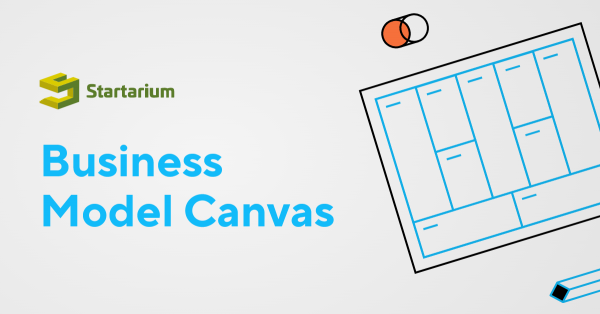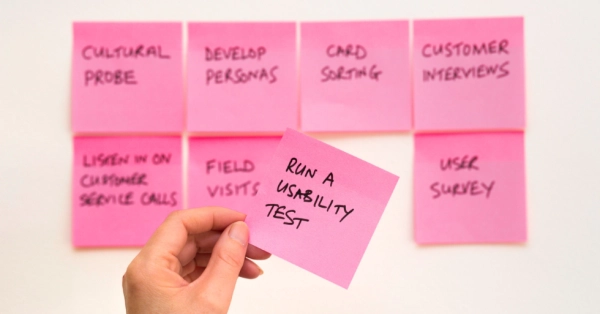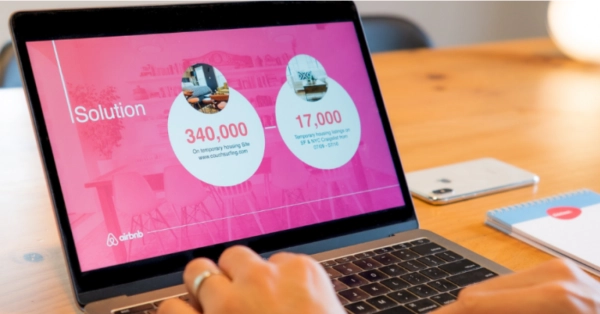As part of the widespread lean startup philosophy, the identification of a problem to solve for a specific customer segment and the validation of a need are fundamental to building a successful startup. Here's how this process works.

Identifying a problem and validating a solution are a must because they set the direction the team has to follow while creating the product and identify the aspects the team has to focus afterwards to deliver the product. And although there is no universal recipe for this, the steps below help clear up some of the confusion.
A real problem worth a closer investigation usually meets a few criteria:
-
At some point it becomes clear which the sub-segment of the market to be addressed in the beginning is, with a detailed and specific picture of the customers (e.g.: project managers of teams larger than 7 people, working in agencies or software companies).
-
The issue or problem, together with the time/situation in which it occurs can be clearly described, and the potential users confirm that they are looking for a solution to use (e.g.: when the team expands to more than 5 members, it becomes harder for the manager to communicate/manage it and keep an overview of the work progress at the same time).
-
The targeted sub-segment actively seeks a solution to its problem, looking for ways to manage it or inventing a system to solve it (e.g.: the team manager tries various tools or documents to keep track of the tasks and their progress and pushes the team to use them).
-
Users are willing to pay or spend significant time to solve the problem, which equates to the resources involved (e.g.: managers hire an assistant manager or pay for a process/system which can be used for project management).
Sorting through the criteria above helps you to:
-
Eliminate uncertainty as you get as close as possible to users’ answers;
-
Validate the lessons learnt - the results are evidence-based information and actionable observations;
-
You work smarter, not harder, figuring out what to focus on and building things so as to meet yours customers’ expectations;
-
Build-measure-learn, a feedback loop that can be considered from the very start and applied later as a basic principle.
You need to validate the ideas so as to minimize the risk of implementing ideas that no one wants or is willing to pay for. This is how you make sure that the product/idea has potential and that the most critical assumptions about the startup idea are valid.
Instruments, tools and processes used to identify the problem and validate a need
For your idea to be validated, you should have a validation strategy to back it up. In general, there are four types of idea validation methods: assessment, fact finding, tests, and experiments.
Assessment is all about determining quickly, with no external research, if an idea is worth moving forward with at this time Assessment is never enough to choose to build and launch an idea (although that’s the practice in many companies) as it only gives us weak evidence.
Techniques you can use:
-
Goals alignment — Is this idea helping us achieve any of our organizational, professional and personal goals?
-
Initial ICE analysis — ICE is a technique to score ideas based on their potential impact, Ease (opposite of effort) and Confidence (how much evidence we have this idea will have the expected impact).
-
Business modeling — New products and new business models should first make business sense on paper — this can be a simple revenue/cost projection in a spreadsheet, along with a Lean Canvas and/or Business Model Canvas .
-
Stakeholder reviews — You want to review your idea with internal stakeholders not because they can tell you if it’s a good idea or not (they will definitely try), but because they can help flush out business risks — (legal, brand, PR, security etc.), and advise how to change the idea to mitigate those risks.
-
Assumption mapping — This is a very useful brainstorming technique to find hidden assumptions and risks in your business operating assumptions.
Fact finding is the next, more specific step of looking for available information and data that support or refute the assumptions you are making. Techniques that can be used:
-
Data analysis - you can analyze data available on the internet, reports or statistics, articles focused on that problem / need or information about other startups in the same area. Beware of analyzing someone else’s data — the results may not be representative of your target audience.
-
Interviews with potential users - every contact with potential users, whether in a scheduled interview, a pre-sale meeting or just in a five-minute chat, is an opportunity to learn something about their needs, what they use then and what they think about your idea.
-
Surveys can help you get answers to quantitative and qualitative questions quickly and cheaply, but remember that it is very important to ask the right questions (usually after interviews - information from interviews can be used to prepare the right questions for surveys).
-
Field research — Observing users in their natural environment — at home, their workplace or any other places - can teach you a lot about the context and the reasoning behind their actions and what solution would suit their need best.
-
Competitor analysis– this will not tell us whether an idea is good or not, but can show if competitors feel that this is a problem worth solving, how they position and price their solutions, and most importantly, what real users think of these solutions.
-
Usability tests entail offering users/customers an early version of the product and measuring their reaction, even if you do not have the actual product ready (it can be a paper prototype or mockup). You can ask potential users to analyze and give feedback regarding the interactive mockups, code prototypes, or an actual product, if it's already built.
Experiments are varied tests that you design to see how potential users would react to your value proposition, for example.
-
Creating a web page that explains what the product is all about, the features you have in mind, the monetization model and other details to convince the user to subscribe to use the upcoming product.
-
Testing ads on platforms like Facebook or Google to measure people's interest in the value proposition. These could be measured by taking into account the ad interactions or clicks (ads typically lead to a web page where interested parties can leave their e-mail address to receive details about the launch).
-
A fast way to simulate the functionality of a product idea is to have humans do the work that the software would eventually automate In concierge tests, you have team members perform a service on behalf of the customer. For example, the creators of Groupon started out by selling flash deals on their blog and then manually created the coupons and emailed them to customers.
Regardless of the experiment or test, what is important is to have clear performance indicators of what you are measuring. In parallel with the lean canvas or business model canvas, you can work with test and learn cards, which are meant to make your experiments and lessons learned as clear as possible.
But the most useful method I've found until now is, by far, the customer interview, more precisely talking directly to people selected by you as your target group based on a plan of questions and what you want to find out from them. Basically, there are some standard questions which, when asked step by step, do nothing but follow logic.
1. "What are the problems you are facing…?"
In order to get proper validation, the interviewees should not know details about what you want to build (or the less the better). Questions help you dig deeper into the problem. During this step you should relate to the problem you want to address most with your future product. Then ask another question about that problem, and so on, until you think you have enough connections to the core of the problem.
2. “What are the alternatives you use to solve this problem?"
Since it's a problem, people most likely try to solve it somehow, either offline (calling friends, seeking professional help, going to various markets) or online (searching on Google, posting on Facebook groups, checking specialized websites, etc.). It is very important to find them, because these methods are your direct (a product that does the same thing) or indirect (alternative, substitute) competitors.
3. “What problems have you noticed in these alternatives?"
Perhaps these alternatives are too difficult to use, require time or money, or lack certain features. Once you find out these problems, they also turn into reasons for them to use your product instead of those alternatives.
And they are also suggestions for what you should avoid or implement better. It would be great if you could identify other problems that you could solve with the product and that would bring added value to your potential customers - if not, creating another product in addition to the already existing alternatives will not be of much use.
4. "What would the perfect solution look like to you?"
At this point, the interviewee should be thinking seriously about the situation and already have some ideas about how things could be improved, so you need to help them imagine the right solution for him/her. You might get some surprising creative advice or even advice that is really different from what you had in mind. If they say anything close to what you have in mind, your assumptions about the shape of your product are validated.
This is the first part of the interview. After this, you can mention what you plan to build, describe the details, features and ask for direct feedback on it, and even show some mockups (if any).
Finally, it helps to ask the participants if they have in mind someone else you could talk to, if they can recommend someone else who could provide valuable feedback.
If possible, do 20 such interviews with people in the identified segment, do some surveys and organize some focus groups to get more ideas or to confirm what you already know, and then start building the product.
Recommendations for interviews and ideas validation
-
Focus on validating the customer need first.
-
It's important to find out what works and what doesn't as much as possible before building an MVP.
-
Do the right segmentation and focus the interviews on the target group.
-
In the target group, identify the "early adopters" for whom your product is mandatory, not just "nice to have".
-
Interview potential users until you notice that the information you receive is repeating itself.
-
Improve your interview process (adapt them based on the results of the previous interviews)
-
Use your customers' words when writing your marketing message.
-
When talking about the product, mention its benefits, not its features, first.
-
If possible, validate every new functionality with your customers.
-
The objective is not to get new potential users, but to understand the users for whom the product really solves a problem.
-
Always try to find real facts and situations. They reflect the true behavior that might contradict the user's belief (e.g.: "I would use this..." but the truth is he/she would not use it)
You can learn more about how we ran a customer interview process here - we have also included examples from the aforementioned interview steps.
Some ideas about the customer development process/methodology
-
Customer development is a simple methodology and process of talking to potential customers - before you start building anything.
-
Customer development starts with the key idea that there are no unverified hard facts, so you have to engage in discussions with potential users to test them.
-
Hypothesis testing emulates the scientific method—make a business model hypothesis, design an experiment, and test for validity.
-
Find the data and/or obtain some information to validate, invalidate, or modify the hypothesis. Remember that the goal is to get clarity on a hypothesis, not whether it is validated. You want to know the truth, not to confirm the belief you had before.
Recommended resources for problem validation and customer development
-
Sal Virani, FounderCentric: Practical Customer Development
-
Rob Fitzpatrick: The Mom Test Book & Early Stage Customer Development
-
Presentation of Andreas Klinger
-
Blog of Cindy Alvarez
Mircea Vădan is Managing PartnerActivize & Board Member of Cluj Startups . In Activize.Tech, Mircea focuses on accelerator programs, advisory services for corporations, startups, and VCs.
He works with startup teams during the idea validation, product definition, metrics, go-to-market strategy, business development and investment accessing processes. He is involved in the development of the entrepreneurial ecosystem and founded the Cluj Startups community in 2012. Since then, he has contributed to the development of the FreshBlood, Fintech Camp and Cluj.AI communities.

























